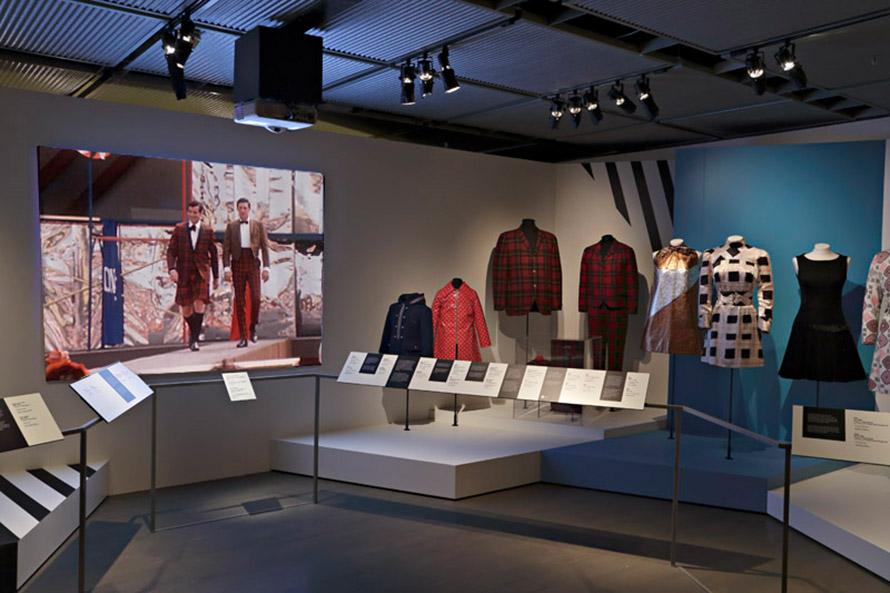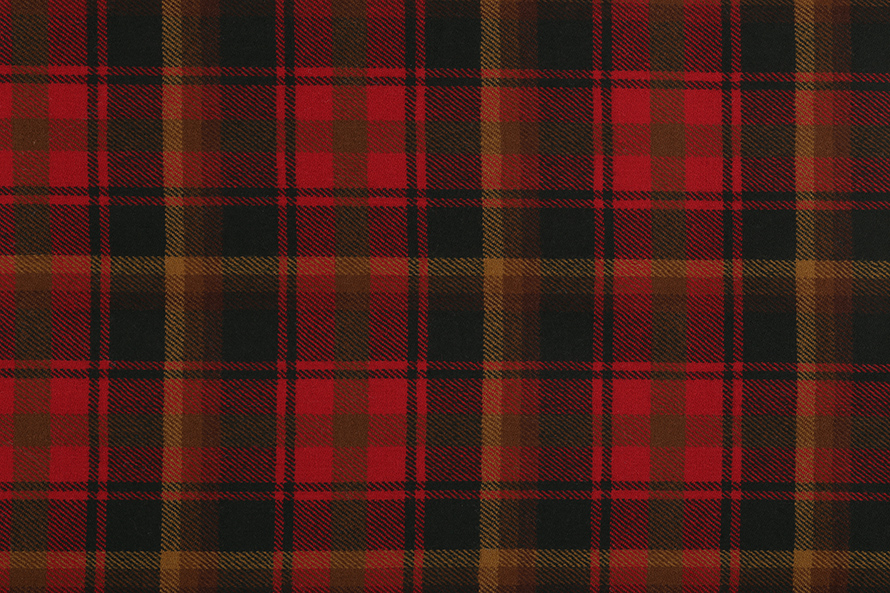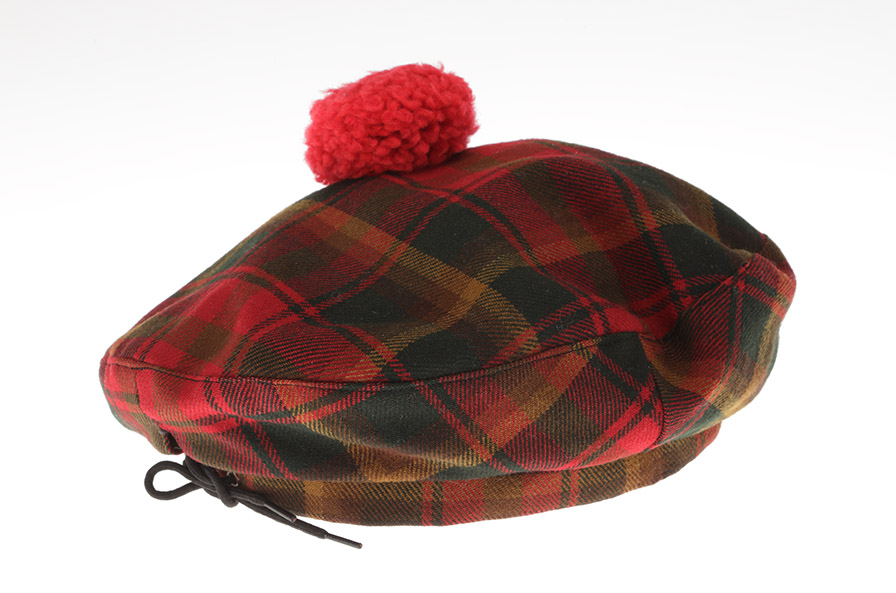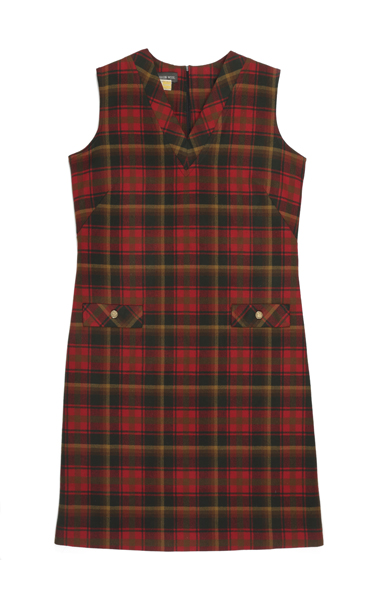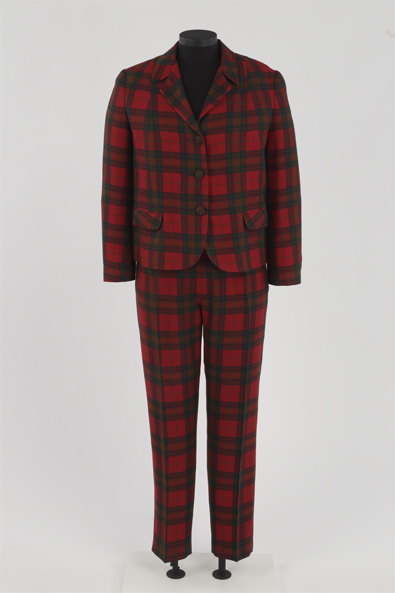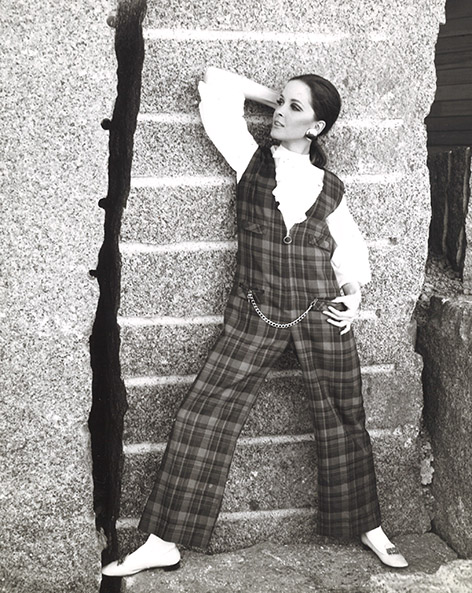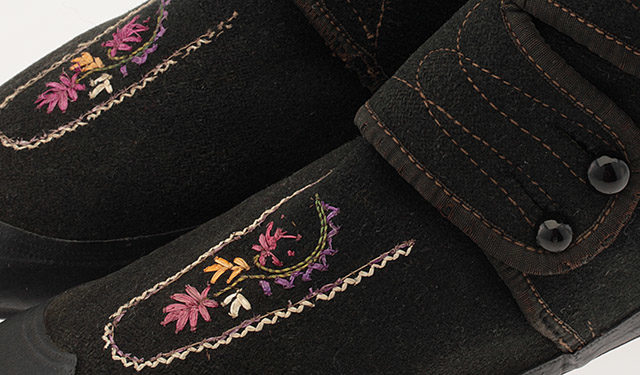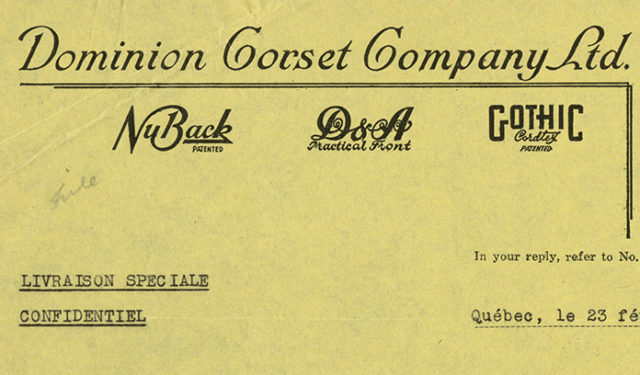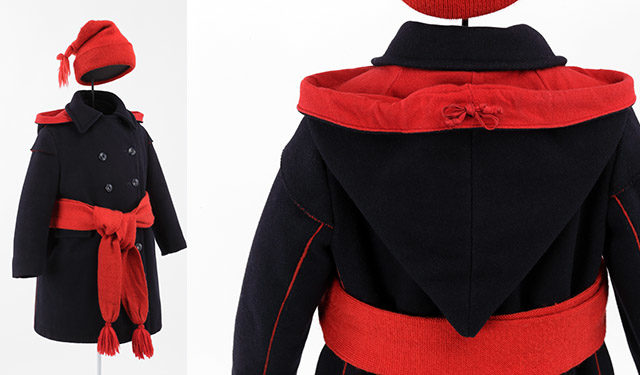Get Your Tartan On!
In the run-up to Expo 67 and Canada's centennial, numerous tartans were created to serve as national symbols.
March 26, 2019
Working on an exhibition often opens doors to stories that are peripheral to the main topic, yet beg further exploration. For the exhibition Fashioning Expo 67, we scratched the surface of a mid-60s tartan trend, yet I had a hunch that there would be far more to learn about these tartans designed specifically to commemorate Canada’s centennial. Since I have gone down that rabbit hole, the Canadian tartans of the 1960s have become a subject of fascination!
Early in the decade, with Expo and Canada’s Centennial on the horizon, the context was ripe for the creation of national symbols. In 1964, David Weiser, Vice-President of Toronto-based garment company Highland Queen Sportswear Ltd., saw an opportunity to create a tartan that would be specifically Canadian. He added three lines—gold, light brown and dark brown—to an existing red and green plaid that the company produced, and christened his textile design the Maple Leaf tartan after the symbol that had been recently chosen for Canada’s flag. His official marketing materials described how the green represented the early colour of the foliage, the gold that of the turn of autumn, the red that of the coming of the first frost, and the brown the leaf in winter.
Weiser had created the tartan for 1967, but noted that it was too good to keep back from the market! His company began to promote it vigorously in a line of women’s clothing. He also licensed it to a number of companies both domestic and further afield for use in fashion garments and accessories. The Maple Leaf tartan was quickly adopted by official bodies for purposes of promoting Canada abroad.
Expo had its own tartan boutique on its grounds; the donor of the McCord’s Maple Leaf tartan tam-o’-shanter recalled buying it there. We were able to acquire a man’s jacket and a woman’s scarf and glove set to accompany it in Fashioning Expo 67, and have gone on to add a Maple Leaf tartan child’s dress, woman’s dress, and necktie, along with a doll dressed in the tartan, to our holdings.
Following the lead of several Canadian provinces that had already developed their own official tartans, Weiser proposed and licensed a small series of provincial tartans, including one for Ontario and the little-known “Plaid du Québec.” While Weiser’s tartans may have received the most exposure, other Canadian companies also created commemorative tartans, like the “Cento plaid” used in a pantsuit in the McCord collection, which was touted as a celebratory tartan for the youth demographic.
Another company created a Centennial tartan, and yet another a Fathers of Confederation series. A series of provincial tartans was created expressly for the centennial by Quebec City firm Pik Mills. A zippered jumpsuit in its Alberta tartan by Montreal designer John Warden was featured in a fashion spread in the magazine The Montrealer.
While tartans are most typically associated with Scottish heritage, nothing about the marketing of any of these Canadian tartans showed intent to highlight ties between Canada and a colonial power as a means of drawing the nation together to celebrate its 100th anniversary. Rather, tartan promoters emphasized a colour symbolism inspired by Canada’s landscape to highlight the country’s distinctness as a territory, and some of the advertising explicitly conveyed an inclusive multicultural vision of Canada. A promotional brochure for the Centennial tartan described it as for “the McGurks and the McTurks – the McCohens, and the McKostopouloses, the McBouchers and the McVanderlindens, . . . the McPasquales.” Furthermore, none of the creators were of Scottish origin; in fact most were first-generation Jewish Canadians.
All but the Maple Leaf tartan seem to have mostly disappeared from the market after 1967. Weiser’s company used it into the 1970s until its bankruptcy. In 2011 the Department of Canadian Heritage recognized the Maple Leaf tartan as an official national symbol, although it remains very little known.
GET YOUR MAPLE LEAF TARTAN ON!
On Tartan Day —April 6— the McCord Museum is bringing together Montrealers of all backgrounds to raise awareness of the Maple Leaf tartan, an obscure national symbol.

